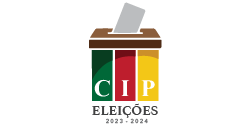General Elections 53 – 17 September 2019
The three best checks on ballot box stuffing are simple things every observer should do.
+ For each count, votes are recorded on the blackboard. Write down those numbers before they are erased.
+ Look at the queue at noon – is it still long or is there no queue?
+ When the edital is written: check that the number of votes on the edital is the same as was
on the blackboard. Check that turnout is what you expect from the queue at noon.
Ballot box stuffing
Ballot box “stuffing” is the most important fraud,ebecause it improperly increases the vote 4 for one candidate. As the name implies, ballot box “stuffing” sometimes involves putting extra ballot papers in the ballot box. But in Mozambique, it is more common to wait until the very end of the count, and write the wrong numbers on the final results sheet, called the “edital”.
This is easy to do, because on 15 October there will be three elections – president, Assembleia da República and provincial assembly. The editais are written after midnight, when everyone is tired, and observers and party delegates do not remember what the actual numbers are. It is easy for corrupt polling station staff to add 300 votes for one party and hope no one will notice.
Use the blackboard
But there is a way to prevent this. During the actual count of the ballot papers, the head of the polling station announces each vote, and the secretary puts a tick mark on the blackboard in a classroom, or on a sheet of paper if there is no blackboard. Watch to see that the secretary puts the marks on the blackboard correctly. These are usually accurate and should be the same as the numbers on the edital. The observer’s job is to ensure this.
Observers and party delegates should write down the numbers of votes as recorded on the blackboard, before they are erased to do the next count. If the observer has a smart phone, take a picture of the blackboard. Later when the edital is written, the observer or party delegate should compare the edital with the their record of what was on the blackboard. If the numbers are different, say something. Observers report this to their observation group and delegates to their party. This is enough to demand a recount of the votes.
It also reduces fraud, because if poling station staff know the observers have a record of the correct count, they are less likely put a false number on the edital.
Writing down or photographing the numbers on the blackboard is the most important thing that an observer or party delegate can do during the entire day. The reason that the law requires the votes to be registered on the blackboard is precisely so that observers and party delegates can copy the numbers and check the edital.
Look at the queue at noon
The other important check is also easy: at 12h00 look at the queue outside the polling station. If the mesa has processed people normally and voting proceeded smoothly, it is possible to guess the turnout by looking at the queue at midday. If the queue is still long, with dozens of people, then turnout will be very high at that polling station. If there is no queue or very few people in the queue, then turnout will be 50% or less.
This test is simple. If the queue at noon is long, then turnout will be high. If there is no queue at noon, then turnout will be low.
The most common way to “stuff” a ballot box is simply to add voters to the edital. This increases the “turnout”; stuffed ballot boxes often have 90% or even 100% turnout, claiming that everyone voted. It will be obvious if the edital says the turnout was 90% but there was no queue at noon. That would mean many ghosts had voted.
Again, if this happens, say that the edital is wrong, and refuse to sign it. Observers tell their
observation group, and delegates tell their party.
Boletins nulos
Invalid votes are known as “nulos”. Another common fraud is for polling station staff to spoil a ballot paper after it has been counted for the opposition, usually by putting a second ink mark on the ballot paper. Ballot papers are normally put in piles on the classroom floor and the mark is added when no one is looking. Sometimes, ballot papers are simply moved from an opposition pile to the nulo pile.
Again, the blackboard is the check. If the blackboard says there were 23 nulos but there are 50 ballots in the nulo pile on the floor, then the extra ballot papers have been fraudulently spoiled. Party delegates should raise this when the edital is being written, and observers must report the discrepancy.
The counting process is long and tedious. Observers should watch the blackboard. Are votes being recorded correctly? When the count is finished, take a photo or copy down the totals. And check that these numbers are the same as on the edital.
And at midday, step outside the polling station and look at the queue. High turnout or low? Then compare that with the turnout as reported on the edital.





